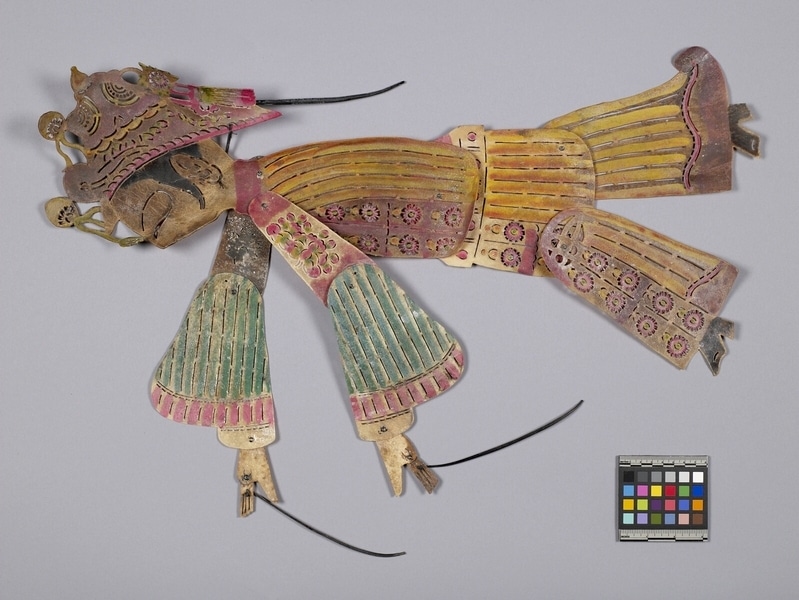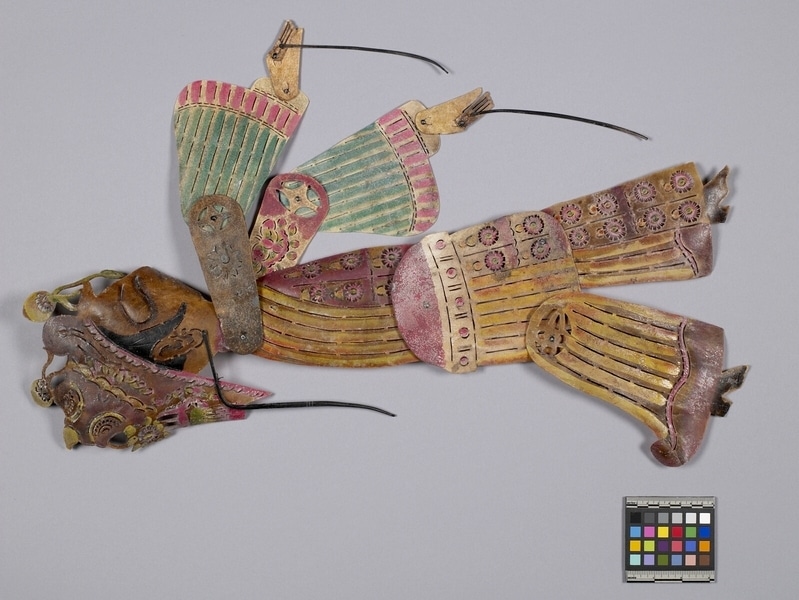Shadow Puppet Item Number: Edz1384 from the MOA: University of British Columbia


Description
A large shadow puppet of a Chinese man. Wearing an elaborate ceremonial hat once red, green, yellow, and pink, now colours faded in most areas. Wearing long oriental style robes with floral decoration on half of the body on the front. Large green sleeves edged with pink. Has black high heeled shoes. Plastic rivets on shoulders, elbows, hands, and knees. One right angled black water buffalo horn stick pointed downwards connected to the hat end with black string. One black horn stick on each hand.
History Of Use
First documented evidence of shadow puppetry in China was C.E. 960-1126. Puppeteering is a family profession performed at festivals and religious celebrations. Before 1900, no women were allowed to see these performances in public. Performances were, therefore, held in their homes. Now appreciated by all ages and classes. Puppets vary in size according to regional styles. Anatomy and construction of figures similar throughout. Puppets portray idealized types. The solid faces are incised and painted with designs which indicate the figures' personalities. Hairstyles and headdresses are designed with appropriate shaped motifs and colours to match characters' status. More elaborate costumes represent characters of higher rank. Peking puppets: faces on profile; beards and headdresses carved as part of head; arms attached at same spot on opposite side of torsos; jointed at waists, hips, knees, shoulders, elbows, wrists and hands in 2-3 parts. Originally used donkey skin, now use same, but also cowhide, sheepskin, water buffalo, and pigskin. Operating sticks made of water buffalo horn.
Cultural Context
Theatrical performance.
Item History
- Made in China before 1974
- Collected during 1974
- Owned by Marta Friesen before March 3, 1981
- Received from Marta Friesen (Seller) and Museum of Anthropology Shop Volunteers (Funding source) on March 3, 1981
What
Who
- Culture
- Chinese
- Previous Owner
- Marta Friesen
- Received from
- Marta Friesen (Seller) and Museum of Anthropology Shop Volunteers (Funding source)
Where
- Holding Institution
- MOA: University of British Columbia
- Made in
- China
When
- Creation Date
- before 1974
- Collection Date
- during 1974
- Ownership Date
- before March 3, 1981
- Acquisition Date
- on March 3, 1981
Other
- Condition
- fair
- Accession Number
- 0705/0043